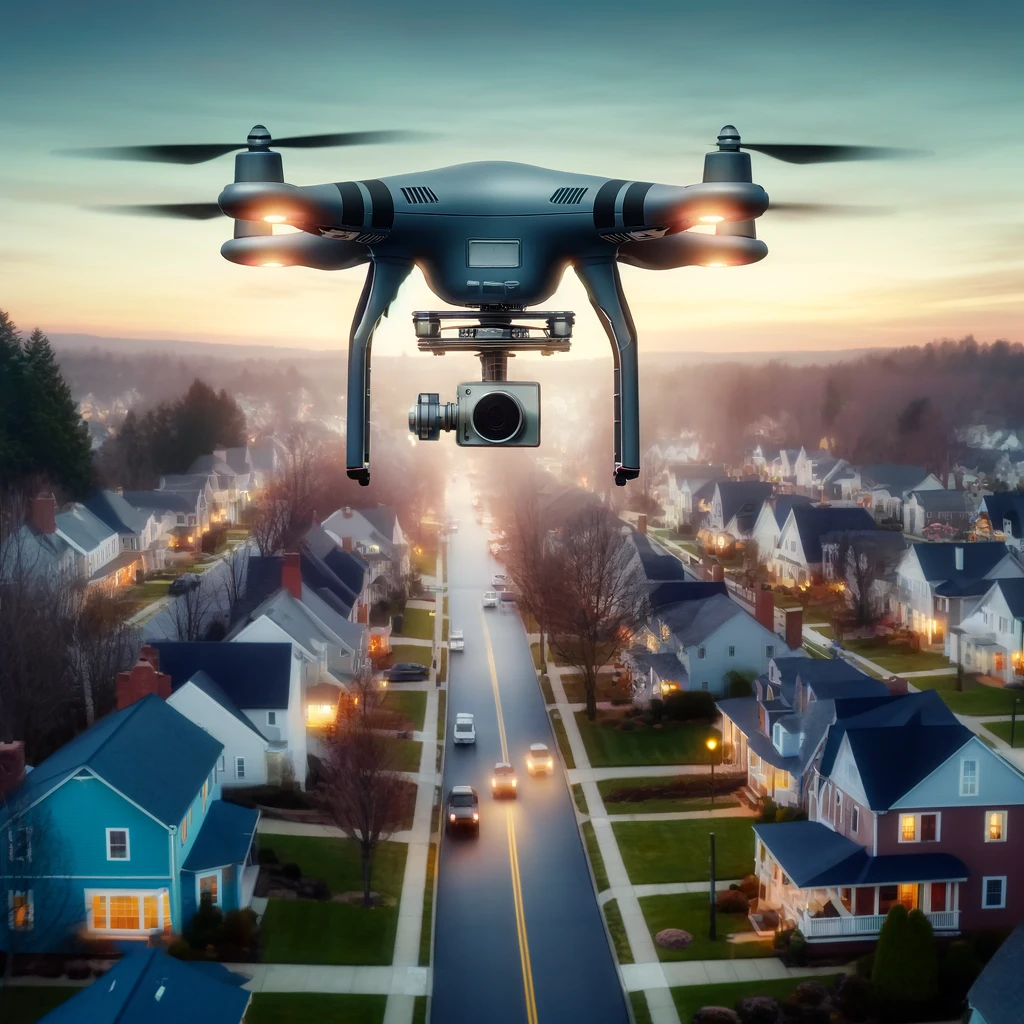In the cities of Burbank and Glendale, where local police departments have historically shared aerial resources, a new debate is emerging over the efficacy and necessity of traditional helicopter use in public safety operations. Recent developments have seen these communities question whether quieter, more cost-effective drone technologies could replace the longstanding helicopter model.
Traditionally, Burbank and Glendale have operated jointly under the Joint Air Support Unit (JASU), using helicopters for various law enforcement tasks. A recent decision to purchase a new $5 million helicopter underscores the ongoing reliance on this form of air support, which offers rapid response capabilities and broad aerial surveillance.
However, this conventional approach has not been without its challenges. Operating costs for the helicopter exceed $1,000 per hour, a significant financial burden for the taxpayer. Additionally, the noise pollution generated by these aircraft has increasingly become a concern, particularly in residential areas near the airport. Magnolia Park has been referred to as an “air highway” by residents who regularly check the aircraft activity on flightradar24.com and note that the community is the crossing zone for airships from the LAPD, LA Sheriff’s department as well as private plane and commercial jet operations during the hours of the voluntary curfew when pilots are asked not to engage in flying for the benefit of the quiet enjoyment of residents. Residents report frequent disturbances, especially during night hours when the city’s voluntary curfew is ignored.
In contrast, the City of Fremont has pioneered the use of drones as first responders in public safety. Their Drone First Responder (DFR) program, launched in collaboration with Fremont Police and Fire Departments, deploys drones from fixed locations in response to emergency calls. This initiative has demonstrated significant benefits, including faster response times and reduced operational costs compared to traditional helicopters.
The drones in Fremont’s program are dispatched autonomously to emergency scenes, providing live video feeds and situational awareness to first responders before they arrive. This not only enhances the safety and effectiveness of ground operations but does so at a fraction of the cost and with minimal noise, addressing one of the primary concerns of Burbank and Glendale residents.
Chula Vista Police Department’s DFR program further exemplifies the success of this technology. Since implementing drones, the department has seen increased efficiency in handling emergency situations, from crime scenes to traffic accidents. The program allows for a “virtual” first response, where drones provide critical information to ground teams, improving strategic decision-making and overall public safety.
Given these successes, voices within Burbank and Glendale are advocating for a reevaluation of their air support strategies. Critics argue that the helicopter, while useful, represents an outdated approach that imposes unnecessary costs and noise on the community. They suggest that drones, by virtue of being economical and quieter, represent a modern solution that could better serve public needs.
The discussion has reached a boiling point, with talks of introducing a ballot measure to limit helicopter operations during late night and early morning hours. Advocates for this measure argue that while aerial support is crucial, it must be balanced with the quality of life for residents. They propose that drones could provide a viable alternative, capable of delivering the necessary surveillance and response capabilities without the disruptive noise of helicopters.
This debate comes at a time when public scrutiny of law enforcement budgets and operations is increasing. With drones offering a quieter, more cost-efficient alternative, the transition from helicopters to unmanned aerial systems could serve as both a fiscal measure and a community-friendly initiative. Such a shift would not only reflect technological advancements in public safety but also demonstrate a commitment to addressing community concerns about noise and the efficient use of public funds.
As the cities of Burbank and Glendale consider their future in public safety operations, the decision to invest in drones over helicopters could set a precedent for other small cities facing similar challenges. The move towards drone technology in public safety operations reflects a broader trend of integrating innovative solutions to enhance service while respecting the community’s needs and resources.


